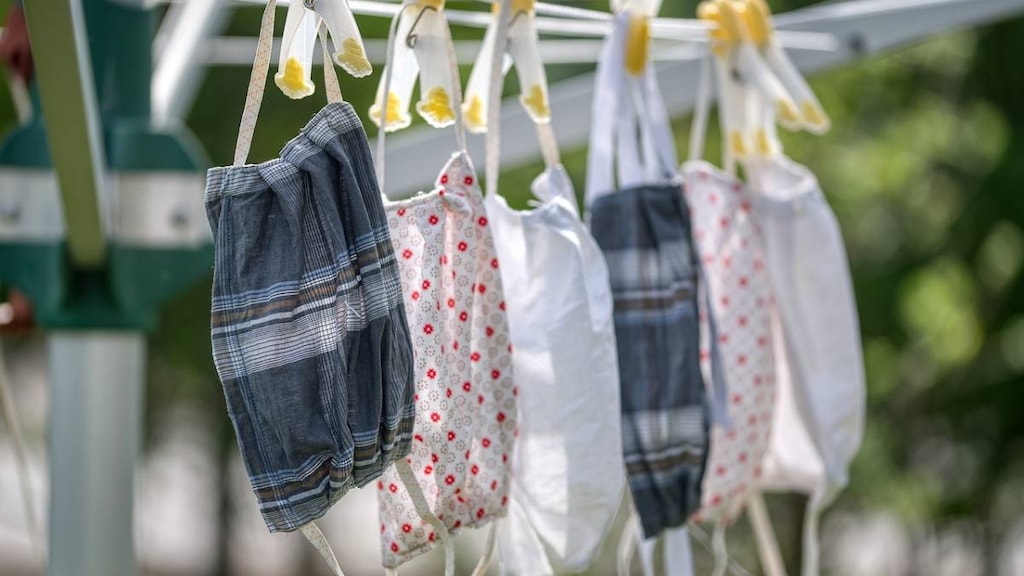Are We Our Own Worst Enemy? How We're Spreading Coronavirus

Viruses need people to survive and replicate, so how we behave plays a major role in managing an outbreak of a disease such as COVID-19, which is caused by the new coronavirus (called SARS-CoV-2).
Despite attempts to stop the spread of SARS-CoV-2, the World Health Organization (WHO) reported on March 1, 2020 that the virus had spread to 58 countries outside of China. A large increase from the 37 countries affected only a few days earlier.
How does the new coronavirus spread?
SARS-CoV-2 (the new coronavirus) spreads in much the same way as other viruses, such as seasonal influenza (flu). The main way it spreads is via respiratory droplets. When a person with COVID-19 (the disease caused by the virus) coughs, sneezes or exhales they release droplets of infected fluid. These droplets tend to infect people in close proximity (within approximately 6 feet), via their mouth, eyes or nose.
The infected droplets can also contaminate surfaces such as phones, door knobs and tables. If you touch an infected surface and then touch your face you can become infected.
SARS-CoV-2 is also found in stool samples, meaning that the fecal-oral route is another likely route of transmission. China’s CDC (Center for Disease Control and Prevention) has stated that infected stool samples could contaminate hands, food and water, for example. Put simply, the poo from an infected person could pass on the virus to others, just like respiratory droplets can.
How long does the new coronavirus last on surfaces?
Experts don’t know exactly how long SARS-CoV-2 lasts on surfaces, but researchers have carried out a review of the scientific literature and found that other coronaviruses can last up to 9 days on surfaces like plastic, metal and glass.
What are people doing to spread the new coronavirus?
Although SARS-CoV-2 can’t travel great distances all by itself, here are some examples of how we’re making its job a little bit easier.
1. A lack of proper training and equipment
The Diamond Princess cruise ship was turned into a giant petri dish when passengers were quarantined on the boat in Japan. Inadequate containment measures resulted in hundreds of people becoming infected while on board the ship. Full protective gear was not provided for all the health staff and medical professionals working on the boat, and sick crew members mixed with those still at work. This enabled the virus to spread quickly.
After SARS-CoV-2 had had the opportunity to spread widely among the passengers, America evacuated 328 of its citizens from the boat, including 14 people who tested positive for the virus. Despite objections from the US CDC that infected and non-infected people should not be on the same flight home, everyone travelled together.
Following the arrival of the evacuees in the US, President Trump stated that “we’ve brought in some Americans from a ship because it was really the right thing to do and they’re in quarantine.” He pointed out that they’re all in quarantine “so there’s no problem with it whatsoever, they’re all in quarantine” and goes on to mention that the US has “a lot of great quarantine facilities”.
However, subsequent reports of community spread of the virus indicate that inadequate containment measures are allowing it to spread. Health and Human Services (HHS) Department employees were reportedly sent in to assist returning evacuees without proper training or protective equipment, which may lead to further spread of the virus in the US. The first death from COVID-19 occurred in the US on February 29, but it’s currently unclear where the person who died picked up the virus.
2. Giving it a free flight
New Zealand confirmed its first case of COVID-19 on February 28, in a person who had recently returned to the country after some weeks in Iran. The person wore a mask on the plane because they felt unwell. Due to a cough, difficulty breathing and symptoms of a lung infection they were admitted to hospital the same day they arrived in the country. They later tested positive for SARS-CoV-2. It’s not clear whether the person suspected they had COVID-19 before boarding the plane in Iran, which has now become a new global epicenter of the virus outbreak. Watching the virus spread around the world, however, it is obvious that it has taken advantage of quite a few free flights.
3. Burying our heads in the sand
Unfortunately, refusing to be tested does not stop you developing COVID-19, which was perhaps what a women in South Korea was hoping. The woman, who became known as Patient 31, attended church services at the Shincheonji religious group and is thought to have been a ‘super spreader’ of SARS-CoV-2. Despite doctors suggesting she be tested for the virus because she had a high fever, Patient 31 initially refused. Instead she attended church services, a buffet lunch in a hotel and visited a spa, which has likely contributed to the rapid rise of the disease in South Korea.
We’re our own worst enemy
The spread of SARS-CoV-2 highlights that sometimes we’re our own worst enemy. We ignore symptoms, hop on planes when we’re sick, don’t use protective equipment or simply forget to wash our hands, which enables the virus to spread. While researchers work to create a vaccine and other treatments, rather than panic-buying, maybe our efforts would be better focused on changing our behavior to stop the spread of SARS-CoV-2 in our communities.
Article references
- World Health Organization (WHO). Coronavirus disease 2019 (COVID-19) Situation Report – 37. February 26, 2020. Available at: https://www.who.int/docs/default-source/coronaviruse/situation-reports/20200226-sitrep-37-covid-19.pdf [Accessed 28 February 2020].
- World Health Organization (WHO). Coronavirus disease 2019 (COVID-19) Situation Report – 41. March 1, 2020. Available at: https://www.who.int/docs/default-source/coronaviruse/situation-reports/20200301-sitrep-41-covid-19.pdf?sfvrsn=6768306d_2 [Accessed March 2, 2020].
- World Health Organization (WHO). Getting your workplace ready for COVID-19. February 27, 2020. Available at: https://www.who.int/docs/default-source/coronaviruse/getting-workplace-ready-for-covid-19.pdf [Accessed February 28, 2020].
- Centers for Disease Control and Prevention (CDC). Coronavirus Disease 2019 (COVID-19). Frequently Asked Questions and Answers. Available at: https://www.cdc.gov/coronavirus/2019-ncov/faq.html. [Accessed February 28, 2020].
- Centers for Disease Control and Prevention (CDC). Coronavirus Disease 2019 (COVID-19). How COVID-19 Spreads. Available at: https://www.cdc.gov/coronavirus/2019-ncov/about/transmission.html. [Accessed February 28, 2020].
- Zhang W, Du R-H, Li B, et al. Molecular and serological investigation of 2019-nCoV infected patients: implication of multiple shedding routes. February 17, 2020 Emerging Microbes & Infections 9:1, 386-389 DOI: 10.1080/22221751.2020.1729071.
- Kampf G, Todt D, Pfaender S, Steinmann E. Persistence of coronaviruses on inanimate surfaces and their inactivation with biocidal agents. Journal of Hospital Infection. https://doi.org/10.1016/j.jhin.2020.01.022. [Accessed February 28, 2020].
- The New York Times. 'We're in a Petri Dish': How a Coronavirus Ravaged a Cruise Ship. February 22, 2020. Available at: https://www.nytimes.com/2020/02/22/world/asia/coronavirus-japan-cruise-ship.html [Accessed March 1, 2020].
- CBS News. Trump announces coronavirus travel restrictions and screening efforts on certain visitors. Updated February 29, 2020. Available at: https://www.cbsnews.com/news/trump-press-conference-coronavirus-developments-watch-live-stream-today-updates-2020-02-29/. [Accessed February 28, 2020].
- Time. Federal Workers Were Sent to Help U.S. Coronavirus Evacuees Without Proper Protection, Whistleblower Says. February 27, 2020. Available at: https://time.com/5792135/coronavirus-whistleblower-hhs-employees/. [Accessed March 1, 2020].
- Chris Hayes. (February 28, 2020) So here's what appears to be chain of events: The Trump administration repatriated infected Americans over the objections of the CDC. HHS then sent federal workers to interact with the infected population without adequate training or protection [Twitter POST]. Retrieved from https://twitter.com/chrislhayes/status/1233149899446857729.
- The New York Times. Trump Was Furious That Passengers With Coronavirus Were Brought Back to U.S. February 22, 2020. Available at: https://www.nytimes.com/2020/02/22/us/politics/trump-coronavirus-cruise-ship.html. [Accessed March 1, 2020].
- The Washington Post. Coronavirus-infected Americans flown home against CDC’s advice. February 21, 2020. Available at: https://www.washingtonpost.com/health/coronavirus-diamond-princess-cruise-americans/2020/02/20/b6f54cae-5279-11ea-b119-4faabac6674f_story.html [Accessed February 28, 2020].
- Live Science. New coronavirus may spread through poop. Available at: https://www.livescience.com/coronavirus-covid-19-spread-through-feces.html. [Accessed March 1, 2020].
- The White House. 2020, February 25. President Trump Holds a Press Availability. Retrieved from: https://www.youtube.com/watch?v=y7JdrhnXA_Q. [Accessed February 28, 2020].
- The White House. 2020, February 26. President Trump and Members of the Coronavirus Task Force Hold a News Conference. Retrieved from: https://www.youtube.com/watch?v=iXOjBB_Yyig. [Accessed February 28, 2020].
- NZ Herald. Coronavirus: First case in New Zealand after person arrives from Iran. February 28, 2020. Available at: https://www.nzherald.co.nz/nz/news/article.cfm?c_id=1&objectid=12312691. [Accessed March 1, 2020].
- Stuff. Coronavirus: New Zealand patient not subject to health checks upon landing at Auckland Airport. February 29, 2020. Available at: https://www.stuff.co.nz/national/health/119913458/coronavirus-new-zealand-patient-not-subject-to-health-checks-upon-landing-at-auckland-airport. [Accessed March 1, 2020].
- Stuff. Coronavirus: First case of virus in New Zealand. February 28, 2020. Available at: https://www.stuff.co.nz/national/health/119899280/ministry-of-health-gives-latest-update-on-novel-coronavirus. [Accessed March 1, 2020].
- The New Yorker. HOW IRAN BECAME A NEW EPICENTER OF THE CORONAVIRUS OUTBREAK. February 28, 2020. Available at: https://www.newyorker.com/news/our-columnists/how-iran-became-a-new-epicenter-of-the-coronavirus-outbreak. [Accessed March 1, 2020].
- The New York Times. Secretive Church at Center of South Korea's Explosive Coronavirus Outbreak. February 27, 2020. Available at: https://www.nytimes.com/reuters/2020/02/27/world/asia/27reuters-china-health-southkorea-church.html. [Accessed March 1, 2020].
- Reuters Graphics. The Korean Clusters. How coronavirus cases exploded in South Korean churches and hospitals. February 26, 2020. Available at: https://graphics.reuters.com/CHINA-HEALTH-SOUTHKOREA-CLUSTERS/0100B5G33SB/index.html. [Accessed March 1, 2020].
- The Straits Times. 'Crazy auntie' and secretive church at heart of spike of coronavirus cases in South Korea. February 23, 2020. Available at: https://www.straitstimes.com/asia/east-asia/crazy-auntie-and-secretive-church-at-heart-of-spike-in-s-korea. [Accessed March 1, 2020].
- NZ Herald. Coronavirus: 'Panic buying' hits supermarkets around the globe. March 1, 2020. Available at: https://www.nzherald.co.nz/world/news/article.cfm?c_id=2&objectid=12312958. [Accessed March 1, 2020].





